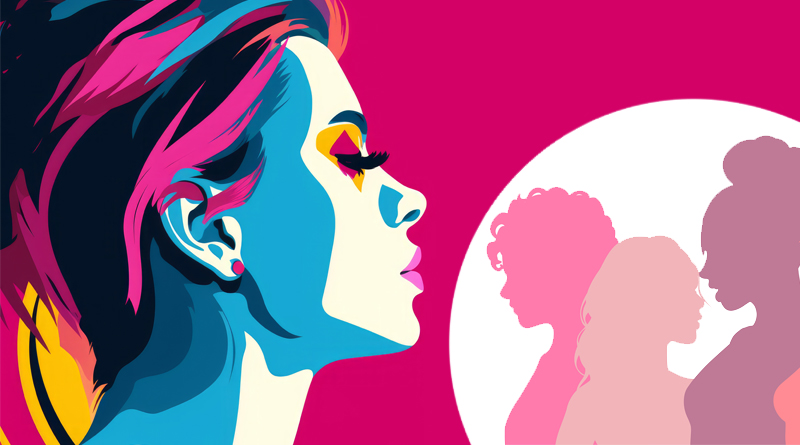The Evolution of Femininity
Are Women making progress or losing ground?
By: Maria Alejandra Pulgar
Modern times have transformed the concept of femininity, from a synonym for weakness and submissiveness into the notions of strength, independence, inclusion, and leadership.
The United Nations has proposed “Invest in Women; Accelerate Progress” as the theme for International Women’s Day 2024. However, the strides women worldwide are making toward the expected progress and equality to achieve the goals for 2030, are far from going up and steady. When women and girls get better income and education, their communities progress and their quality of life improves, but obtaining the funds to support women-owned or promoted initiatives is not always an easy task; for instance, 104 countries in the world have laws preventing women to work specific jobs, making 2.7 billion women legally forbidden to have the same choices as men in many parts of the world.
On top of that, on behalf of the achievement of gender equality and social revindications, other social groups have gained space and diverted the focus, and resources, from the discussion on women’s issues around the world. There have been instances where even the simple use of the words “woman” or “mother” has been challenged to be substituted for more neutral or function-based denominations.
Women’s rights are human rights. Neutralizing, or even worse allowing the erasure of, women-intrinsic roles and women-related concepts, traits, and symbols in the name of extreme feminism would be a mistake and that would backfire for the wellbeing of humanity.
Are Femininity and Masculinity obsolete concepts?
“This question touches on the debate topic of evolutionary psychologists of nature versus nurture”, explains Rosa Rauseo-Mazzocca LMHC, Faculty and Supervisor at the Center for Mind-Body Medicine at St. Thomas University. “The definitions of masculinity and femininity have been associated with stereotypical roles in societies. We often hear it said that girls play with dolls and boys with cars; I consider that all human beings can have masculine energies (energy inclined towards action, logic, and reason) and feminine energies (caring, feeling, warmth, intuition). I do not see masculinity-femininity as opposite poles or a duality. I perceive a continuum (like many shades of gray and not black-white)”.
Instead of being neutralized, the definition of femininity nowadays is been broadened beyond external expressions, colors, or symbols, to include the infinite potential and qualities of girls, women, and female-oriented individuals, their kindness, empathy, resilience, and strength; their ambition to shatter glass ceilings and get involved in non-traditional fields like STEM or politics; their physical differences and beauty standards; allowing them to express their authentic selves free from social stereotypes.
“I believe that women, in general, have been assuming roles that were previously considered more ‘masculine’, as a result of women’s liberation, women’s rights to exercise the vote, etc.”, continues Rauseo, “but I do not consider that they are less feminine because they are performing in roles that were previously exclusive to men. Each person has both energies to a greater or lesser degree. Cultures tend to promote roles based on each person’s beliefs and customs.”
The womanhood balancing act
Investing in and supporting the progress of women is fundamental for world progress, but the expectation society places on women’s shoulders to perform with excellence in all their roles and endeavors adds a degree of difficulty to an already complicated balancing act.
“The misalignment between demands is given by the multiple roles we play in society. Since women are mothers, and wives and work outside the home, they are forced to have multiple obligations or what in English is called the different hats” explains Rauseo.
“A mother who works all day outside the home is expected to cook, wash clothes, and do housework. Men, for their part, can assume part of the responsibilities and share household obligations when the couple both work outside the home. Women have assumed many roles and we should seek a balance in demands and expectations”.
Communication and education on ‘household roles’ instead of ‘gender-specific’ roles can pave the way for new generations to be more attuned to the importance of sharing the weight of household responsibilities. Changes begin at home, improving the quality of life of the whole community.
“Woman” and “Mother” are here to stay
While women’s movements in some countries have been supportive of changing narratives for more inclusive terms, substituting in their discourses the words “woman” or “mother” for “person with a uterus” or “pregnant person”, there are no social movements of men changing the word “man” to “person with a prostate” or “people who ejaculate”. Men keep their spaces while seeing women changing the focus of their efforts from their struggles and challenges toward the needs of other social groups.
Instead of the neutralization of terms, colors, or patterns in feminine products, services, and institutions, the objective should always be the broadening of options instead of the erasure of a woman’s fundamental role in society.
Rauseo comments in that regard that, “when we understand that gender inclusion is not linked to biological characteristics and is not binary, we can understand that respect for each individual. In my opinion, we should continue to use the term WOMAN for those who identify with the female sex assigned at birth. The key is acceptance and respect.”
The evolution of femininity is a testament to women’s unwavering efforts to reclaim and redefine their identities; the celebration of International Women’s Day should embrace and value femininity in all its forms. By doing so, we can create a more inclusive and diverse world where all women can advance, succeed, and occupy their rightful spaces in society.

